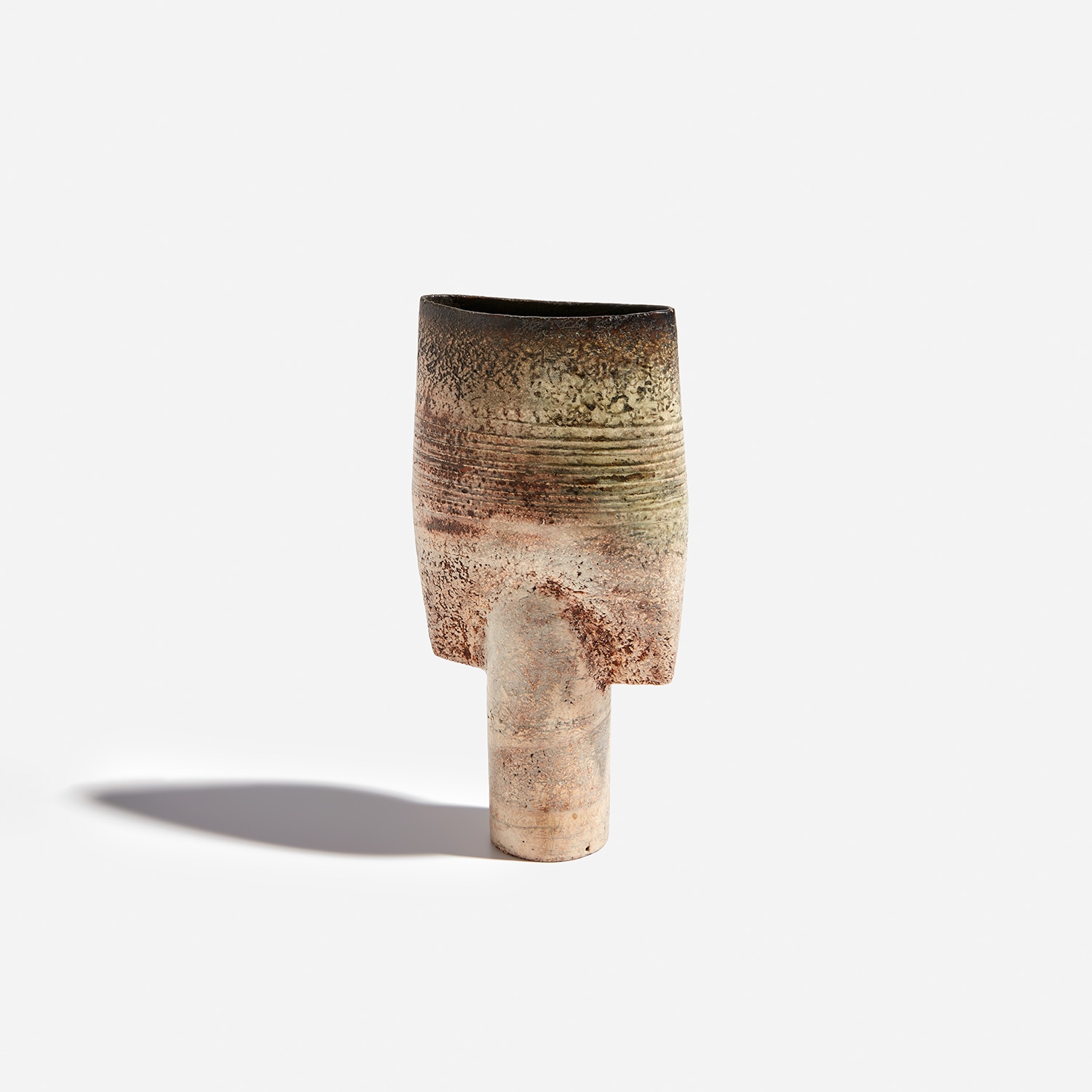





69
Hans Coper
"Spade" form
Full-Cataloguing
Their interest in this material developed mid-life, following, and alongside, their respective successful careers: Kenneth as a bond broker on Wall Street and Barbara as an image consultant and personal shopper. The son of Ruth and Leon Juster, of Juster Gallery in New York, Kenneth’s love of art began in childhood. Juster Gallery specialized in French and American Impressionist and Modern art and were perhaps best known for their championing of artist André Lhote.
As an adult, Kenneth initially focused his attention on collecting Native American baskets, which are now in the collection of The Metropolitan Museum of Art. His insatiable curiosity and love of acquiring new works led him to British ceramics, which became the focus of his collection. Kenneth believed art was to be shared and enjoyed, and his passion was contagious. Soon, both he and Barbara were deeply involved in collecting, with their love of the craft world encompassing ceramics, wood, glass, wearables and jewelry.
In the 1980s, Barbara became involved with the American Craft Museum, eventually joining the board. They both participated in the museum’s “Collector’s Circle” and developed relationships with curators and dealers, traveled to fairs, and spent weekends going to galleries. During this time, they quietly built their personal collection, which few people would ever see in its entirety.
In 1990, they opened the New York branch of Bellas Artes, the Santa Fe gallery founded by Bob and Charlotte Kornstein in 1981. Barbara ran the gallery and became more deeply involved with the American Craft Museum, while Kenneth committed himself to collecting. Said Douglas Heller, of Heller Gallery in New York, “Their efforts to promote and preserve the achievements of materially-based makers was always motivated by passion, not profit.”
In addition to their identity as collectors and dealers, close relationships with artists, curators and gallerists, their patronage of museums, and support of the broader craft community, the Juster’s legacy is beautifully expressed through their daughter, Stefanie A. Juster (Gothelf). The Justers involved Stefanie in their collecting at an early age, often seeking her assistance with buying while she was a student in London. A supporter of her parents’ passion and steward of their collection, Stefanie’s appreciation for this material is a product of her parents’ impact and generosity of spirit.
Hans Coper
German | B. 1920 D. 1981Hans Coper learned his craft in the London studio of Lucie Rie, having emigrated from Germany as a young Jewish engineering student in 1939. He initially assisted Rie in the studio with the ceramic buttons she made for the fashion industry, as well as ceramic tableware, but soon Coper was producing his own work. By 1951 he had received considerable recognition exhibiting his pots in the "Festival of Britain."
Coper favored compound shapes that, while simple in appearance, were in fact complex in construction. Similar to the making of Joseon Dynasty Moon Jars (Rie in fact displayed a Moon Jar in the studio), he would build his vessels by bringing several thrown forms together, for example joining bowls rim to rim. Coper eschewed glazes and preferred the textured surfaces achieved through the application of white and black slips, evoking the abraded texture of excavated vessels. This interest in ancient objects was very much in step with other modernists of his time—Coper admired Constantin Brancusi and Alberto Giacometti and his textured markings have been compared to sculptors such as William Turnbull.
In the last phase of his career, Coper reduced the scale of his work creating small "Cycladic" pots that stood on pedestals or drums, recalling the clay figures of Bronze Age Greece.